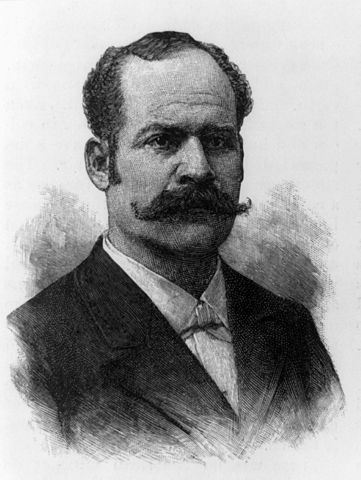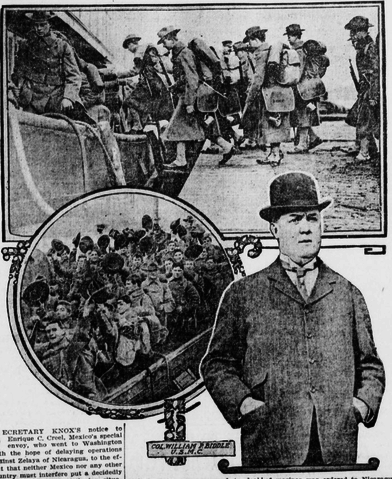President Taft's next concern was the state of affairs in Nicaragua. The United States had planned to construct a canal of sorts in Nicaragua during the late 1800's but never actually started the project. Later, in the early 20th century, they decided to invest heavily in the Panama Canal instead. The U.S. had not been the only nation interested in constructing a Nicaraguan canal, however--several European nations were eager to establish their own quick route from the Pacific to the Atlantic. To ensure that Roosevelt's Monroe Doctrine Corollary was respected and upheld, Taft was prepared to intervene.
Study the information on the tabs below to learn how and why Taft attempted to apply dollar diplomacy in Nicaragua--and if his strategy worked.
The Situation
Taft's Response
The Result

Once in power, the Taft administration was intent on securing control of Nicaragua--if only to keep other nations from attempting to gain influence there. Besides, U.S. corporations had already taken over the political, banking, and transport systems in Nicaragua, and--according to the principles of dollar diplomacy--these assets needed and deserved protection. Nicaragua's president, Manuel Zelaya, had seized power during a military coup in 1893, and since revolutionary leaders were not regarded ideal business partners for U.S. bankers, the first thing Taft did was demand regimen change.

When Nicaragua failed to elect a new leader, Taft decided to intervene militarily. In 1911 and 1912, more than 2,000 Marines disembarked in Bluefields on the Mosquito Coast of Nicaragua to oppose Zelaya, who promptly handed over the reigns of power and departed for Spain. After Zelaya's return to power, he agreed to sign a treaty with Taft's government and also gave control of the Nicaraguan railroad to a company managed by U.S. interests, though the U.S. Congress refused to ratify this treaty.

The majority of the Nicaraguan population regarded the U.S. military presence as an occupation. It became obvious that the United States intended to prevent any of the European powers from constructing a Nicaraguan canal that would compete with the U.S.-controlled Panama Canal. The Taft administration worked to infuse large amounts of capital into the economy in order to maintain the United States' hold on the leadership. Towards the end of Taft's administration, President Zelaya requested intervention in order to "secure the property of U.S. citizens." Taft's policies of injecting capital into Nicaraguan infrastructure would result in an intermittent U.S. military presence that continued until 1990.
How did dollar diplomacy work out in Nicaragua? Use these questions to make sure you know.
What was the main reason why Taft wanted to keep European countries out of Nicaragua?
Taft did not want the Panama Canal to have competition.
Taft did not want the Panama Canal to have competition.
Taft did not want the Panama Canal to have competition.
Why were Nicaraguans concerned about the US presence?
American banks and corporate interests controlled the railroads and much of the farmland.
American banks and corporate interests controlled the railroads and much of the farmland.
American banks and corporate interests controlled the railroads and much of the farmland.
What did President Zelaya do when the US troops arrived?
Zelaya knew he wouldn't last long, and so he handed over power to Diaz and departed for Europe.
Zelaya knew he wouldn't last long, and so he handed over power to Diaz and departed for Europe.
Zelaya knew he wouldn't last long, and so he handed over power to Diaz and departed for Europe.
You got # out of # correct. Click the Retry button for another attempt.
You got a perfect score. Great job!
Question
U.S. investments in Latin America amounted to a lot of money. How much was invested in Mexico?
